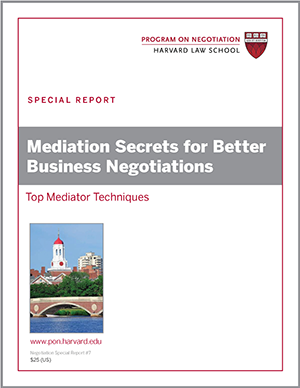
Don’t let Overconfidence Ruin your Potential Negotiated Agreement
When partners are negotiating a new business deal, overconfidence can lead them to overlook the possibility that the business will fail or otherwise struggle. Wise negotiators envision not only the best-case scenario, but the worst-case scenario, and prepare for it before signing on the dotted line.
In 2014, two art museums were at the center of disputes involving their host cities, Detroit, Michigan, and North Miami, Florida. In both cases, the question of who owns the museums’ collections and the museums themselves were at stake. Also in both cases, the interested parties have turned to mediation to break the impasse.
Beginning in Detroit, the city’s bankruptcy put the world-class collection of its art museum, the Detroit Institute of Arts (DIA), in jeopardy. Though the DIA is operated by a nonprofit organization, its valuable collection is owned by the city, a fact that put it in jeopardy.
Negotiations in Detroit for Cultural Assets
Some Detroit creditors argued that part of the collection should be sold off to help address the city’s $18 billion in pension and other liabilities, wrote the New York Times. But local leaders and museum officials rejected this idea, arguing it would be short-sighted and demoralizing for a city that is attempting to rebuild itself after a devastating fall.
Auction house Christie’s appraised a portion of the museum’s masterpieces at $867 million. The DIA agreed earlier in 2014 in federal bankruptcy court mediation sessions to raise $100 million to help head off a possible auctioning of its assets. On June 9, the DIA announced that the Big Three U.S. automakers—Ford, General Motors, and Chrysler—had agreed to donate a combined $26 million to the pot. (Of course, in 2009, GM and Chrysler themselves emerged from bankruptcy thanks in large part to billions of dollars in federal assistance.)
With private donors and Michigan Legislature together raining over $800 million to save the collection from sale and to lessen pension cuts for Detroit retirees, the DIA was on a path toward greater security. As part of the bankruptcy deal reached in mediation, ownership of the art collection would be transferred from the city to the nonprofit that operates the museum to protect it from any future turmoil suffered by Detroit. The plan would still need to overcome opposition from creditors and must be voted on by the city’s 20,000 retirees.
Further south, in North Miami, the much smaller but prestigious Museum of Contemporary Art (MoCA) was also embroiled in a dispute over its future and management. The museum’s board is attempting to move the museum out of the working-class city and merge with “its wealthier and more glamorous neighbor,” the Bass Museum of Art in Miami Beach, writes Patricia Cohen in the Times. North Miami officials were trying to block the plan.
The city established MoCA as a nonprofit corporation in 1996 and founded a board of trustees to operate the museum. The negotiated agreement between the city and the board states that the “board shall own, protect and manage the permanent MoCA collection of art,” the Times writes. But the city argues that board only holds the collection on behalf of the public. “The collection belongs to the city, and they are trying to steal it,” North Miami Mayor Lucie Tondreau said.
Board members argued that MoCA had long outgrown its 12,000-foot gallery space. In 2012, North Miami voters rejected a $15 million municipal bond proposal to finance an expansion. Afterwards, board members began negotiating a merger with the Bass Museum.
That’s when the dispute between North Miami and the board escalated. The board sued to terminate the museum’s 10-year contract with North Miami on the grounds that the city had neglected MoCA. In response, the City Council revoked the board’s power to appoint and remove museum trustees and appointed its own interim director, even as the board-appointed director retains an office in the museum.
A county judge ordered the city and museum to start a mediation process regarding the museum’s future. The battle put MoCA exhibitions and programs in limbo. In November 2014, the dispute was settled with most of the works remaining in Miami, which was considered a win for the city.
The debates over the fate of these two museums suggest, in part, the need for business negotiators to carefully think through the range of future outcomes when hammering out an initial contract. In both cases, the question of who owned the museums’ collections became an issue as a result of fiscal difficulties in their host cities.
Related Article: Using Negotiation to Resolve a Conflict – How negotiations can help resolve the most intractable disputes.
Originally posted in 2014 and updated regularly.






Interesting approach